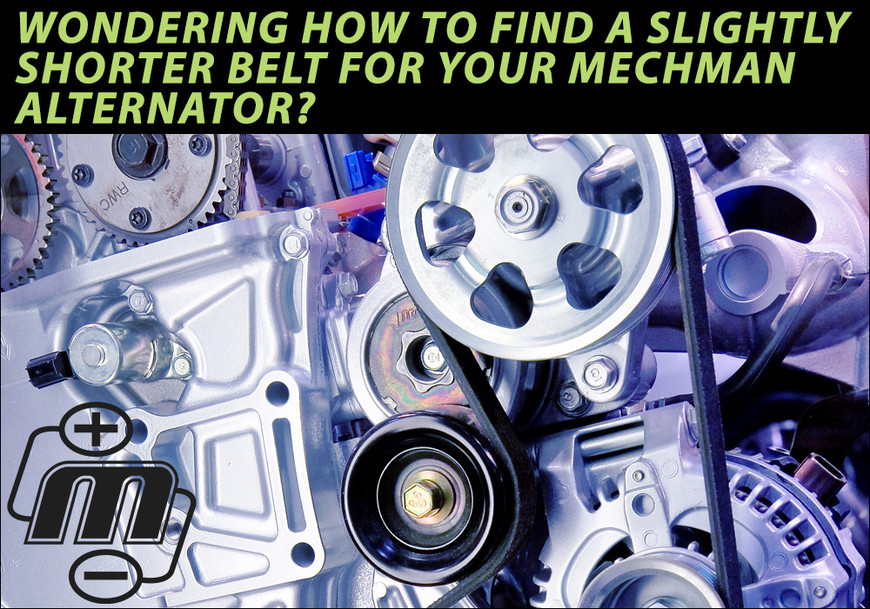1st Feb 2022
How to purchase a shorter belt.
It's pretty easy!
We recommend going to your local NAPA™ with your stock belt in hand. Ask the salesperson to look at their paper belt catalog. (don't try to have them look anything up in the computer) Most stores have a belt measuring tool on site as well. If available, you can use this tool to stretch out your original belt to determine it's length. It is also possible to look at the part number on your original belt (if it is still legible) in order to determine length that way.
Once you have determined the length of your original belt, simply go to the “belt part numbers by length” index in the paper catalog. Count the number of rubber ribs on your original belt, and locate the section in the catalog index for that number of rib belts. Locate your original belt length, then scan below it to see what the next available shorter belt sizes are. There are more available length options in 6 rib than any other belt width. If you are unable to find a suitable belt in your rib count and length, it is possible to purchase a belt with a higher rib count, and slice off the un-used ribs of the belt with a razor blade. While this does take a few minutes to do, it can open up a lot more options for belt length.
Belts can be tricky, so we usually recommend buying two or three different slightly shorter belts so that you can test fit each one. Most vehicles have a spring tensioner that puts tension on the serpentine belt. To find which shorter belt is optimum, test fit the belt onto the engine, and observe the spring tensioner arm. Most spring tensioners will have a small “arrow” or “line” cast into the pivot point of the tensioner. There is usually then a “range” area cast into the other half of the pivot point on the tensioner. Ideally, the “arrow” or “line” indicator, should be roughly in the middle of the “range” marking. Keep in mind that spring tensioners are a wear part! The spring becomes weaker with age, which puts less tension on the belt, which can cause belt slip.
One final option for fine tuning belt tension, is to change the dimeter of one or more free-spinning idler pulleys on the vehicle. Most vehicles have one or more idler pulleys that help “wrap” the belt properly through the accessory pulleys. Different diameters and widths of idler pulleys can be located in the paper idler pully catalogs. These catalogs generally have an index with photos and dimensions of all the different idler pulleys available. If you can locate a replacement idler pulley with a larger/smaller diameter, but the same mounting inside diameter, width, and offset as your original idler pulley, you can change the idler pulley to change the required length of the belt. In some cases, a larger idler pulley can be installed so that the original belt length can be used.”
Here is a link to an easy online belt length / part number calculator on Dayco's™ website:
http://www.daycoproducts.com/online-catalog-1?part_type=20
Here is a link to the Dayco™ online belt part numbers by length guide:
https://www.daycoaftermarket.com/wp-content/downloads/AUTO_&_HD_BELTS_-_2019_GUIDE.pdf
Here is a link to the Dayco™ Idler pulley guide with photos and dimensions:
https://www.daycoaftermarket.com/wp-content/downloads/PULLEY_-_2019_GUIDE.pdf


